Nyheter
Opportunities Exist in Emerging Markets Despite Challenges
Publicerad
9 år sedanden
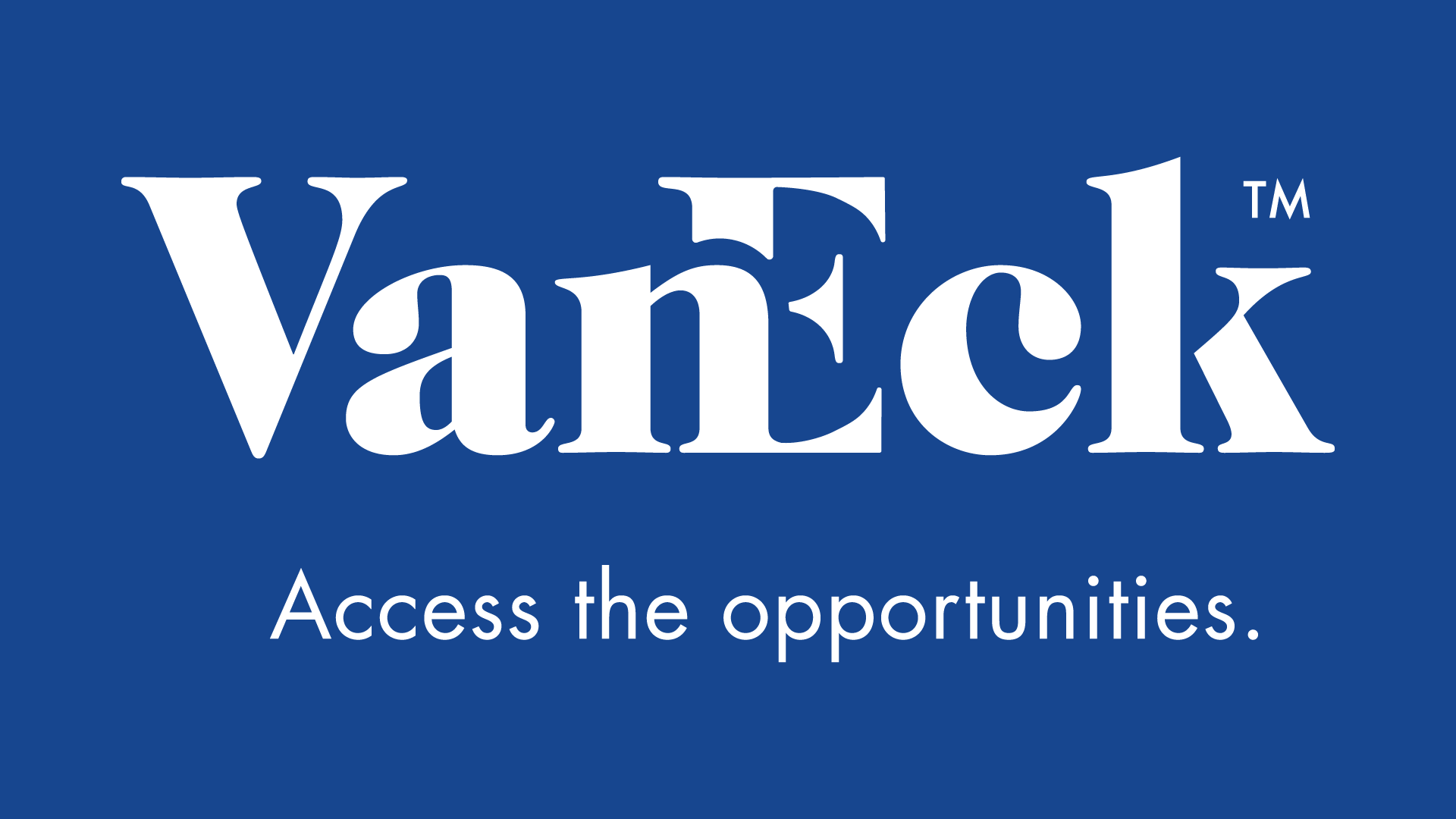
Manager Commentary – Opportunities Exist in Emerging Markets Despite Challenges
By: Eric Fine, Portfolio Manager
November 2015
Executive Summary
- Emerging markets (EM) debt still facing many headwinds
- Strong idyosincratic drivers in Argentina, Venezuela and Russia
- EM real rates remain low by historic standards
Overview
We still see many headwinds for EM debt including, but not limited to, the possible upcoming Federal Reserve (Fed) rate hikes, a looming potential devaluation in China, unstable commodity prices, a still weak EM growth trajectory, inflation risk, implosion in Brazil and potentially approaching troubles in Turkey. Regarding the Fed, just as the market was consistently mispricing the timing of their first hike relative to “dots” implied timing, the same seems to be occurring for the timing and magnitude of the anticipated subsequent rate hikes…fasten your duration seatbelts, in our opinion. Despite China telling the world that its currency devaluation will happen someday, it did not trigger capital flight. Shouldn’t the usual rule of thumb on devaluations apply, namely, you do them big and early in conjunction with some real or pretend reforms? How does it not get worse the longer China waits? It is maintaining a currency peg while cutting rates, making it cheaper for investors to short the currency. Furthermore, the rapidly approaching Fed hike means a tighter policy in China, via the exchange rate peg, in a time of declining growth rates for an exporting economy. The risks of unstable or weak commodity prices seem high. Brazil remains in the grips of a vicious political and economic adverse feedback loop of worse outcomes (e.g., recession) creating divisive politics and policy paralysis. Turkey does not seem to be a market concern, but we think it should be. President Erdogan is about to complete his takeover of state institutions which includes the likely departure of the current central bank head. The policy implication could be a central bank easing policy, risking currency weakness and self-fulfilling inflation expectations. Additionally, they may be tempted to intervene in the currency market, threatening their already-low reserves.
But, we think there are still investments that can outperform in the face of these risks. Our portfolio could be thought of as consisting of two halves: idiosyncratic and defensive. The idiosyncratic portion is primarily composed of Argentina and Venezuela dollar-denominated bonds, and both Russia rouble- and dollar-denominated bonds. As the term idiosyncratic implies, we see asset price performance almost entirely based on country-specific factors rather than systematic factors such as U.S. interest rates, etc. In Argentina, the idiosyncratic driver is the new government’s likely settlement with its holdout creditors, while in Venezuela, government bonds are trading near recovery value. In Russia, the idiosyncratic driver for local-currency bonds is declining inflation. The defensive half of the portfolio is made up of some high-spread dollar-denominated short-dated bonds with cheap spreads relative to fundamentals. The spread duration is such that if one is correct, the reward would be the constant carry. One of the largest allocations is to low duration dollar-denominated bonds in South Korea, which is experiencing ongoing balance of payments surpluses and can perform defensively in risk-off scenarios.
Why focus on Argentina and Venezuela as key idiosyncratic diversifiers? We have long maintained that the November presidential elections in Argentina would result in a more market-friendly government than the one established under former President Cristina Kirchner. The election victory of the opposition candidate Mauricio Macri – which was not an obvious outcome even a couple of months ago – might be a real game-changer. The new government’s line-up is very impressive, and so far, Macri has been sticking to his pre-election promises of dealing with the existing imbalances, such as multiple exchange rates, in a timely fashion. The Macri administration is also likely to bring in the resolution of the holdouts situation, paving the way for Argentina’s eventual rating upgrade to single-‘B’. We consider it a good sign that in late November Moody’s changed Argentina’s outlook to positive. The bottom line is that the country is solvent, but it currently has no market access, which should change when the holdouts issue is resolved. This is now a more likely outcome, in our opinion. Venezuela’s macro outlook remains very challenging but markets continue to price in an extremely high chance of default under our recovery value assumptions. Our position is that 100% probabilities of default, in general, are to be viewed skeptically. It remains to be seen whether the National Assembly elections on December 6 will bring in meaningful policy changes or closer relations with the U.S. – but there are several very low-hanging policy “fruits” (such as higher gasoline prices, streamlining the exchange rate system) that can reduce imbalances if there is enough political will.
Why a less negative perspective on Russia? First, Russia is emerging in a new light following the Paris tragedy and the shooting down of its military plane by Turkey. We think that appetite for an escalation of sanctions against Russia in this new environment is low. The rating agencies have already noted that the improving relations between Russia and the U.S. may boost Russia’s rating. Second, the authorities’ response to a considerable deterioration in the external conditions following the introduction of sanctions was surprisingly orthodox and helped avoid a major drain on reserves. Russia seems to be emerging from this episode with a stronger credit profile (e.g., stable reserves, lower external debt, a larger current account surplus). Third, the rouble was used mainly as a shock-absorber in the past months and is now significantly undervalued both on a short-term basis and also when looking at fundamental metrics. Additionally, a major disinflation move is expected in the next 3-6 months allowing the central bank to ease further. All this makes us more comfortable owning non-sanctioned Russia securities (sovereigns [OFZs] and hard-currency quasi-sovereign debt). Fourth, duration makes the trade attractive, in our opinion. Inflation could decline to 6% by the end of 2016 with the policy rate (and yield curve) around 10%. So, with carry and duration, we are looking at rates that are possibly 100bp-200bp lower, which may provide a cushion for potential currency weakness.
Why still unable to find attractive local currency? First, even though real interest rates in emerging markets increased in the past few weeks, they remain low by historic standards and also in comparison to real rates in developed markets (real interest rates in the U.S. have recovered to their long-term average). The Federal Open Market Committee (FOMC) continues to give strong signals that it is ready to hike in December. Such a move might not only pull nominal yields in the U.S. (at least in the near term) but also real rates in emerging markets. Second, with the renminbi in November finally becoming part of the International Monetary Fund’s (IMF) Special Drawing Rights (SDR) basket, an international reserve asset which is based on the values of major currencies, the focus is now shifting to possible currency devaluation in China and its potential impact on the rest of EM FX (both in terms of the initial knee-jerk reaction and the subsequent rounds of “currency wars”). The offshore currency (CNH) is weakening relative to the controlled onshore currency (CNY). Third, even though there were some improvements in the EM macro data flow in the past weeks, we have yet to see any meaningful improvement in the EM growth outlook. Consensus continues to downgrade the 2016 growth forecasts in all EM regions – reflecting debt overhang and low commodity prices among other things. The expected growth differential between EM and the U.S. continues to narrow down, undermining the fundamental support for EM FX. We should note the potential for contagion risk in Brazil and Turkey perhaps, due to the size and importance of their economies.
A key feature of the intial steps of our investment process compares the risk premium of a country to its fundamentals) and we should emphasize that it does uncover pockets of value in local-currency markets. Colombia, Brazil, Zambia, Nigeria and others pay high real interest rates. However, in each of these cases, these investments failed the following step of our process which test specific risk factors. Colombia has been very correlated to oil prices, and we expect it will continue to be, and thus the failed correlation test, Brazil fails the policy/politics test, and Zambia and Nigeria are slowly moving to capital control regimes, in our opinion, and therefore, fail the policy/politics tests.
Exposure Types and Significant Changes The changes to our top positions are summarized below. Our largest positions are currently: South Korea, Argentina, Venezuela, South Africa and Russia.
- We added local-currency sovereign and hard-currency quasi-sovereign debt exposure in Russia. We expect to benefit from a combination of a change in the geopolitical narrative that reduces the potential risk of additional sanctions and disinflation that should allow the central bank to further slash interest rates.
- We reduced sovereign and quasi-sovereign hard-currency debt exposure in Chile due to concerns about the price of copper in light of the ongoing growth slowdown in China.
- We also reduced local-currency sovereign exposure in Romania due to concerns about local politics and policy noise.
- We reduced hard-currency sovereign exposure in Israel due to greater vulnerability risks as well as concerns about duration. We also reduced quasi-sovereign hard-currency exposure in Vietnam on greater vulnerability risks.
Fund Performance
The Fund (EMBAX) gained 0.13% in November, compared to a 1.11% loss for a 50% local-50% hard-currency index.
The Fund’s biggest winners were Venezuela (hard-currency sovereign), South Africa (hard currency sovereign and quasi-sovereign) and Ivory Coast (hard-currency sovereign). The Fund’s biggest losers were Argentina (hard-currency sovereign), Romania (local-currency sovereign) and Mongolia (hard-currency sovereign).
Turning to the market’s performance, the GBI-EM’s biggest winners were Nigeria, Brazil and Indonesia. The biggest losers were Colombia, South Africa and Hungary – with Colombia and South Africa affected by low commodity prices and policy rate hikes.
The EMBI’s biggest winners were Venezuela, Kazakhstan and Malaysia, while its biggest losers were Egypt, Chile and Mongolia (with the latter two affected by concerns about the price of copper).
Diversification does not assure a profit or prevent against a loss.
Expenses: Class A: Gross 1.32%; Net 1.25%. Expenses are capped contractually until 05/01/16 at 1.25% for Class A. Caps exclude certain expenses, such as interest. Please note that, generally, unconstrained bond funds may have higher fees than core bond funds due to the specialized nature of their strategies. The tables above present past performance which is no guarantee of future results and which may be lower or higher than current performance. Returns reflect applicable fee waivers and/or expense reimbursements. Had the Fund incurred all expenses and fees, investment returns would have been reduced. Investment returns and Fund share values will fluctuate so that investors’ shares, when redeemed, may be worth more or less than their original cost. Fund returns assume that dividends and capital gains distributions have been reinvested in the Fund at Net Asset Value (NAV). Index returns assume that dividends of the index constituents have been reinvested. Investing involves risk, including loss of principal; please see disclaimers on next page. Please call 800.826.2333 or visit vaneck.com for performance current to the most recent month ended.
Data Sources: Van Eck Research, FactSet. All portfolio weightings and statements herein as of November 30, 2015. Unless otherwise indicated.
Duration measures a bond’s sensitivity to interest rate changes that reflects the change in a bond’s price given a change in yield. This duration measure is appropriate for bonds with embedded options. Quantitative Easing by a central bank increases the money supply engaging in open market operations in an effort to promote increased lending and liquidity. Monetary Easing is an economic tool employed by a central bank to reduce interest rates and increase money supply in an effort to stimulate economic activity. Correlation is a statistical measure of how two variables move in relation to one other. Liquidity Illusion refers to the effect that an independent variable might have in the liquidity of a security as such variable fluctuates overtime. A Holdouts Issue in the fixed income asset class occurs when a bond issuing country or entity is in default or at the brink of default, and launches an exchange offer in an attempt to restructure its debt held by existing bond holding investors.
Emerging Markets Hard Currency Bonds refers to bonds denominated in currencies that are generally widely accepted around the world (such as the U.S.-Dollar, Euro or Yen). Emerging Markets Local Currency Bonds are bonds denominated in the local currency of the issuer. Emerging Markets Sovereign Bonds are bonds issued by national governments of emerging countries in order to finance a country’s growth. Emerging Markets Quasi-Sovereign Bonds are bonds issued by corporations domiciled in emerging countries that are either 100% government owned or whose debts are 100% government guaranteed. Emerging Markets Corporate Bonds are bonds issued by non-government owned corporations that are domiciled in emerging countries. A Supranational is an international organization, or union, whose members transcend national boundaries and share in the decision-making. Examples of supranationals are: World Bank, IMF, World Trade Organization. The European Central Bank (ECB) is the central bank for the euro and administers monetary policy of the Eurozone, which consists of 19 EU member states and is one of the largest currency areas in the world. The Labor Market Conditions Index (LMCI) is a dynamic factor model index that combines 19 labor market indicators to provide an assessment of overall labor market conditions. The Employment Cost Index tracks the changes in the costs of labor for businesses in the United States economy.
All indices are unmanaged and include the reinvestment of all dividends, but do not reflect the payment of transaction costs, advisory fees or expenses that are associated with an investment in the Fund. An index’s performance is not illustrative of the Fund’s performance. Indices are not securities in which investments can be made. The 50/50 benchmark (the “Index”) is a blended index consisting of 50% J.P. Morgan Emerging Markets Bond Index (EMBI) Global Diversified and 50% J.P. Morgan Government Bond Index-Emerging Markets Global Diversified (GBI-EM). The J.P. Morgan Government Bond Index-Emerging Markets Global Diversified (GBI-EM) tracks local currency bonds issued by Emerging Markets governments. The index spans over 15 countries. J.P. Morgan Emerging Markets Bond Index (EMBI) Global Diversified tracks returns for actively traded external debt instruments in emerging markets, and is also J.P. Morgan’s most liquid U.S-dollar emerging markets debt benchmark. The J.P. Morgan Emerging Country Currency Index (EMCI) is a tradable benchmark for emerging markets currencies versus the U.S. Dollar (USD). The Index compromises 10 currencies: BRL, CLP, CNH, HUF, INR, MXN, RUB, SGD, TRY and ZAR. The Consumer Confidence Index (CCI) is an indicator designed to measure consumer confidence, which is defined as the degree of optimism on the state of the economy that consumers are expressing through their activities of savings and spending.
Information has been obtained from sources believed to be reliable but J.P. Morgan does not warrant its completeness or accuracy. The Index is used with permission. The index may not be copied, used or distributed without J.P. Morgan’s written approval. Copyright 2014, J.P. Morgan Chase & Co. All rights reserved.
Please note that the information herein represents the opinion of the portfolio manager and these opinions may change at any time and from time to time and portfolio managers of other investment strategies may take an opposite opinion than those stated herein. Not intended to be a forecast of future events, a guarantee of future results or investment advice. Current market conditions may not continue. Non-Van Eck Global proprietary information contained herein has been obtained from sources believed to be reliable, but not guaranteed. No part of this material may be reproduced in any form, or referred to in any other publication, without express written permission of Van Eck Securities Corporation ©2015 Van Eck Securities Corporation.
Investing involves risk, including loss of principal. You can lose money by investing in the Fund. Any investment in the Fund should be part of an overall investment program, not a complete program. The Fund is subject to risks associated with its investments in emerging markets securities. Investing in foreign denominated and/or domiciled securities may involve heightened risk due to currency fluctua-tions, and economic and political risks, which may be enhanced in emerging markets. As the Fund may invest in securities denominated in foreign currencies and some of the income received by the Fund will be in foreign currencies, changes in currency exchange rates may negatively impact the Fund’s return. Derivatives may involve certain costs and risks such as liquidity, interest rate, market, credit, management and the risk that a position could not be closed when most advantageous. The Fund may also be subject to credit risk, in¬terest rate risk, sovereign debt risk, tax risk, non-diversification risk and risks associated with non-investment grade securities. Please see the prospectus and summary prospectus for information on these and other risk considerations.
Investors should consider the Fund’s investment objective, risks, and charges and expenses carefully before investing. Bond and bond funds will decrease in value as interest rates rise. The prospectus and summary prospectus contain this as well as other information. Please read them carefully before investing. Please call 800.826.2333 or visit vaneck.com for performance information current to the most recent month end and for a free prospectus and summary prospectus.
vaneck.com | 800.826.2333
Van Eck Securities Corporation, Distributor
666 Third Avenue | New York, NY 10017
Du kanske gillar
-


BATI ETF investerar i bolag från emerging markets som följer Parisavtalet
-
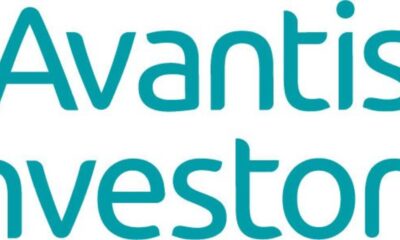

Aktiv ETF från Avantis erbjuder tillgång till en brett diversifierad portfölj av företag från tillväxtmarknader
-
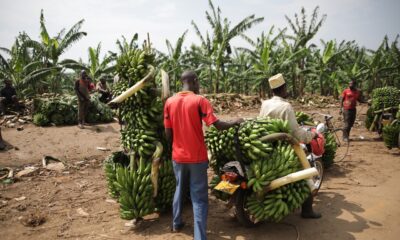

Tillgång till en brett diversifierade portfölj av statsobligationer på tillväxtmarknader
-


RIEM ETF investerar i bolag från emerging markets som följer Parisavtalet
-


BATI – investering i klimatneutrala företag från tillväxtmarknader
-


MVEM ETF investerar i lågvolatila aktier på emerging markets
Nyheter
Europeisk försvarsutgiftsboom: Viktiga investeringsmöjligheter mitt i globala förändringar
Publicerad
38 minuter sedanden
4 april, 2025
Jane Edmondson, Head of Index Product Strategy på TMXVettaFi, träffade Steve Darling från Proactive för att diskutera det snabbt utvecklande globala försvarslandskapet och de investeringsimplikationer som en europeisk försvarsutgiftsboom medför. Med geopolitiska spänningar på uppgång och skiftande försvarsprioriteringar måste investerare navigera efter nya möjligheter och risker i sektorn.
Edmondson lyfte fram Europas oöverträffade ökning av försvarsutgifterna, ett direkt svar på USA:s beslut att minska militärt bistånd till Ukraina. Centralt i denna förändring är EUs initiativ ”Rearm Europe Readiness 2030” på 800 miljarder euro, som syftar till att stärka den militära beredskapen. Detta inkluderar betydande investeringar i nyckelförsvarstekniker och en dedikerad kreditfacilitet på 150 miljarder euro för att förbättra militär kapacitet.
”Det kommer att bli mycket utgifter framöver,” noterade Edmondson och betonade stora tillväxtområden som artificiell intelligens, cyberförsvar, drönarteknik och avancerade artillerisystem.
Hon påpekade att ledande europeiska försvarsföretag – inklusive Rheinmetall, BAE Systems, Thales, Dassault och Leonardo SPA – kommer att dra stor nytta av denna expansion. Dessutom framträder Sydkoreas Hanwha Aerospace som en nyckelspelare i globala försvarskontrakt. Däremot upplever amerikanska försvarsföretag motvind på grund av budgetnedskärningar och inställda upphandlingsavtal, vilket leder till en relativ nedgång i sektorn.
En annan kritisk förändring av global försvarsupphandling håller på att utvecklas när traditionella amerikanska allierade omprövar sina försvarsinköp. Kanada och Portugal, till exempel, omvärderar beställningar på USA-tillverkade F-35 stridsflygplan till förmån för alternativa alternativ, som flygplan från Dassault Aviation.
Edmondson betonade att dessa geopolitiska omställningar skapar stark ekonomisk medvind, särskilt för Tyskland, som kommer att investera uppskattningsvis 500 miljarder euro i försvar under de kommande åren. Hon citerade en nyligen gjord rapport från Goldman Sachs, som förutspår att hälften av dessa utgifter direkt kommer att underblåsa BNP-tillväxten – en effekt som redan återspeglas på finansmarknaderna. Medan europeiska aktier, särskilt Euro Stoxx 50-index, tar fart, har stora amerikanska aktieindex kämpat för att hålla jämna steg.
”Detta är en kraftfull påminnelse för investerare att hålla sig diversifierade, behålla exponering utanför amerikanska marknader och allokera kapital till framväxande globala försvarsteman,” rådde Edmondson.
När globala militära strategier fortsätter att utvecklas kan investerare som positionerar sig tidigt i viktiga internationella försvarssektorer dra nytta av denna historiska förändring.
HanETF planerar en ny försvarsfond med fokus på europeiska företag som kommer att börja handlas i nästa vecka. Vi har ännu inte namnet på denna, men kortnamnet på tyska Xetra är 8RMY medan det i London blir tickern ARMY.
Handla ASWC ETF
HANetf Future of Defence UCITS ETF (ASWC ETF) är en europeisk börshandlad fond. Denna fond handlas på flera olika börser, till exempel Deutsche Boerse Xetra och London Stock Exchange. Av den anledningen förekommer olika kortnamn på samma börshandlade fond.
Det betyder att det går att handla andelar i denna ETF genom de flesta svenska banker och Internetmäklare, till exempel Nordnet, SAVR, DEGIRO och Avanza.

WisdomTree Uranium and Nuclear Energy UCITS ETF USD Unhedged Acc (WNUC ETF) med ISIN IE0003BJ2JS4, försöker spåra WisdomTree Uranium and Nuclear Energy UCITS-index. WisdomTree Uranium and Nuclear Energy UCITS-index spårar företag över hela världen som är engagerade inom uran- eller kärnenergiindustrin.
Den börshandlade fondens TER (total cost ratio) uppgår till 0,45 % p.a. WisdomTree Uranium and Nuclear Energy UCITS ETF USD Unhedged Acc är den enda ETF som följer WisdomTree Uranium and Nuclear Energy UCITS-index. ETFen replikerar det underliggande indexets prestanda genom full replikering (köper alla indexbeståndsdelar). Utdelningarna i ETFen ackumuleras och återinvesteras.
Denna ETF lanserades den 5 mars 2025 och har sin hemvist i Irland.
WisdomTree Uranium and Nuclear Energy UCITS ETF (”Fonden”) strävar efter att spåra pris- och avkastningsutvecklingen, före avgifter och utgifter, för WisdomTree Uranium and Nuclear Energy UCITS Index (”Indexet”). Indexet är utformat för att följa resultatet för företag som är involverade i uran- och kärnenergiindustrin.
Varför investera?
- Få en unik strategi med hög övertygelse för investeringar i uran- och kärnenergiföretag.
- Kärnenergi är avgörande för den framtida hållbara energimixen, eftersom kraven på energi ökar, kommer det att bli nödvändigt att skala upp tillförlitliga källor för ren energi.
- Denna ETF erbjuder exponering mot en diversifierad korg av företag som är involverade i uran- och kärnenergimarknaden, såsom uranbrytning, byggande av kärnkraftsinfrastruktur eller bedriver avancerad forskning om framtida kärnteknik.
- Analysen för urval och viktning av företag i indexet utförs av WisdomTree med betydande expertis i att konstruera tematiska index, vilket säkerställer att portföljkorgen förblir fokuserad och relevant.
- ETFen är UCITS-kompatibel.
Handla WNUC ETF
WisdomTree Uranium and Nuclear Energy UCITS ETF USD Unhedged Acc (WNUC ETF) är en europeisk börshandlad fond. Denna fond handlas på flera olika börser, till exempel Deutsche Boerse Xetra och London Stock Exchange.
Det betyder att det går att handla andelar i denna ETF genom de flesta svenska banker och Internetmäklare, till exempel Nordnet, SAVR, DEGIRO och Avanza.
Börsnoteringar
| Börs | Valuta | Kortnamn |
| Borsa Italiana | EUR | NCLR |
| London Stock Exchange | GBX | NCLP |
| London Stock Exchange | USD | NCLR |
| XETRA | EUR | WNUC |
Största innehav
| Namn | Kortnamn | Land | Vikt % |
| 1. Cameco Corp | CCJ US | CA | 7,63% |
| 2. Paladin Energy Ltd | PDN AU | AU | 6,81% |
| 3. Uranium Energy Corp | UEC US | US | 6,66% |
| 4. Denison Mines Corp | DNN US | CA | 6,39% |
| 5. Doosan Heavy Industries | 034020 KS | KR | 6,06% |
| 6. NEXGEN ENERGY LTD COMMON STOCK | NXE | 5,98% | |
| 7. GE Vernova Inc | GEV US | US | 5,27% |
| 8. Air Liquide SA | AI FP | FR | 5,10% |
| 9. Atkinsrealis Group Inc | ATRL CN | CA | 4,79% |
| 10. Energy Fuels Inc | UUUU US | US | 4,70% |
Innehav kan komma att förändras
Nyheter
MONTLEV, Sveriges första globala ETF med hävstång
Publicerad
12 timmar sedanden
4 april, 2025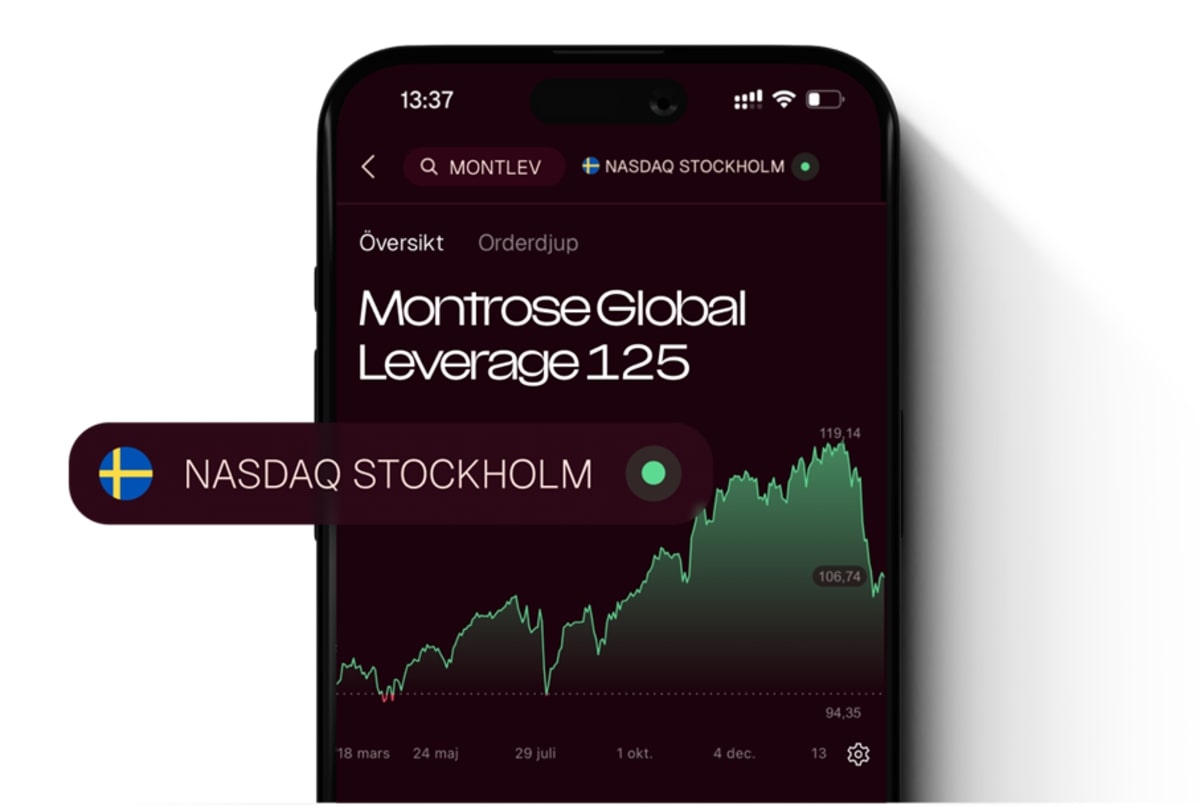
Montrose Global Leverage 125 MSCI World UCITS ETF (MONTLEV), Sveriges första globala ETF med hävstång är utvecklad för investerare som tror på långsiktig tillväxt och vill ha en extra skjuts i sin portfölj. Perfekt för pensionsspar, barnspar eller som en långsiktig bas i din investeringsstrategi.
Första handelsdag: 10 april 2025
Total avgift: 0,41%
Valuta: SEK
Hävstång: x1,25
Inbyggd hävstång
Hävstång för den som är långsiktig
Ingen valutaväxling
Eftersom ETFen är noterad och handlas i Sverige slipper du valutaväxling. Handlar du ETFen hos Montrose köper du den även helt courtagefritt.
ETFen är optimerad för den långsiktiga investeraren som vill maximera sin marknadsexponering på ett effektivt och stabilt sätt. För konton där traditionell belåning inte är möjlig, som tjänstepension och barnspar, erbjuder den även ett sätt att öka avkastningspotentialen.
Hävstången ger en förstärkt marknadsexponering, där en uppgång på 10% i det underliggande indexet innebär en ökning på cirka 12,5% – och vice versa vid nedgång. Finansieringskostnaden för hävstången är STIBOR 3M + 0,60 och rebalanseras i slutet av varje månad.
Innehav och exponering
Starkare global exponering med MSCI World Index
Få möjlighet att ta del av avkastningen från världens största bolag, som NVIDIA, Apple och Microsoft. Med MSCI World Index får du en bred global exponering mot över 1500 ledande företag från 23 utvecklade marknader – med 1,25x hävstång för extra potential.
Handla MONTLEV ETF
Montrose Global Leverage 125 MSCI World UCITS ETF (MONTLEV) är en europeisk börshandlad fond. Denna fond handlas i svenska kronor på svenska Nasdaq Stockholm.
Det betyder att det går att handla andelar i denna ETF genom de flesta svenska banker och Internetmäklare, till exempel Nordnet, SAVR, DEGIRO och Avanza.
Notera att MONTLEV ETF handlas courtagefritt hos Montrose.
Börsnoteringar
| Börs | Valuta | Kortnamn |
| Nasdaq Stockholm | SEK | MONTLEV |
Montrose Global Leverage 125 – 10 största innehav
| Värdepapper | Vikt % |
| Apple | 4,90% |
| Microsoft | 4,03% |
| Nvidia | 4,03% |
| Amazon | 3,17% |
| Alphabeth Inc | 3,12% |
| Meta | 2,13% |
| Tesla | 1,56% |
| Broadcom | 1,37% |
| JPMorgan Chase | 1,06% |
| Eli Lilly | 0,92% |
Innehav kan komma att förändras
Vilka parter är involverade i ETFen?
Investeringsförvaltaren är FundLogic SAS, medan MSIM Fund Management (Ireland) Limited, som förvaltare och global distributör, har utsett Montrose by Carnegie AB som underdistributör. Morgan Stanley agerar som hedge-leverantör och har kontrakterats för att tillhandahålla derivat.
ETFens juridiska namn är Montrose Global Leverage 125 MSCI World UCITS ETF. Montrose som underdistributör får ersättning baserat på AUM i ETFen. Ersättningen beror på volymen i ETFen och uppgår mellan 0,07% – 0,12%
Vad kostar Montrose Global Leverage 125?
ETFen har en estimerad total avgift på 0,405%. 0,38% i löpande avgift och 0,025% i transaktionsavgifter.
Vilken risknivå har ETFen?
Fonden har risknivå 5 på en sjugradig skala. Om den svenska valutan stärks mot underliggande utländska valutor kan ETFen minska i värde.
Ger ETFen ut någon utdelning?
Nej, alla utdelningar återinvesteras direkt i ETFen och återspeglas därför direkt i NAVet och utvecklingen.
Vilket underligggande index har ETFen?
Det underliggande indexet är MSCI World Developed Market Index, denominerat i SEK (NDDUWI composite SEK).
Hur ofta rebalanseras belåningen?
I slutet på varje månad sker en omviktning för att återställa belåningen till 125%. Beroende på hur marknaden har gått sedan den senaste omviktningen kan den faktiska belåningen vara både högre eller lägre. I de fall som marknaden har gått ner är belåningen högre än 125% och ifall den har gått upp är den lägre än 125%. Genom att inte rebalasera dagligen så undviker man att kortsiktigt snabba marknadsrörelser urholkar värdet på ETF.en.
Justeras finansieringskostnaden regelbundet?
Ja, finansieringskostnaden justeras dagligen baserat på änringar av 3M STIBOR. Går räntan upp blir finansieringen dyrare och vice versa om den går ner.
Vad är finansieringskostnaden per år i procent?
För den extra inbyggda 25% belåningen i ETFen är finansieringskostnaden 3M STIBOR + 60 bps. STIBOR (Stockholm Interbank Offered Rate) är den ränta som banker i Sverige tar ut av varandra för kortfristiga lån utan säkerhet på interbankmarknaden. Det är en referensränta som ofta används för att bestämma räntor på olika finansiella produkter, såsom lån, obligationer och derivat. 2025-03-13 var 3M STIBOR 2,339%. Aktuell ränta går att se här.
De pengar som placeras kan både öka och minska i värde och det är inte säkert att du får tillbaka hela det insatta kapitalet. Historisk avkastning är ingen garanti för framtida avkastning.

Europeisk försvarsutgiftsboom: Viktiga investeringsmöjligheter mitt i globala förändringar

WNUC ETF ger exponering mot uran och kärnkraft

MONTLEV, Sveriges första globala ETF med hävstång

Montrose storsatsning på ETFer fortsätter – lanserar Sveriges första globala ETF med hävstång

Kommer snart – en europeisk försvars-ETF, från ett europeiskt företag, utan USA-exponering

Fonder som ger exponering mot försvarsindustrin

WisdomTree lanserar europeisk försvarsfond.

Warren Buffetts råd om vad man ska göra när börsen kraschar

De bästa börshandlade fonderna för tyska utdelningsaktier

Trumps återkomst får europeiska aktier att rusa
Populära
-

 Nyheter2 veckor sedan
Nyheter2 veckor sedanFonder som ger exponering mot försvarsindustrin
-

 Nyheter3 veckor sedan
Nyheter3 veckor sedanWisdomTree lanserar europeisk försvarsfond.
-

 Nyheter1 vecka sedan
Nyheter1 vecka sedanWarren Buffetts råd om vad man ska göra när börsen kraschar
-

 Nyheter3 veckor sedan
Nyheter3 veckor sedanDe bästa börshandlade fonderna för tyska utdelningsaktier
-

 Nyheter4 veckor sedan
Nyheter4 veckor sedanTrumps återkomst får europeiska aktier att rusa
-

 Nyheter4 dagar sedan
Nyheter4 dagar sedanSvenskarna har en ny favorit-ETF
-
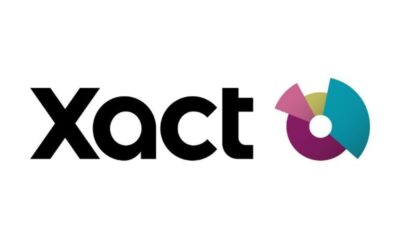
 Nyheter4 veckor sedan
Nyheter4 veckor sedanUtdelning i XACT Norden Högutdelande mars 2025
-

 Nyheter2 veckor sedan
Nyheter2 veckor sedanHANetf lanserar Europa-fokuserad försvars-ETF


